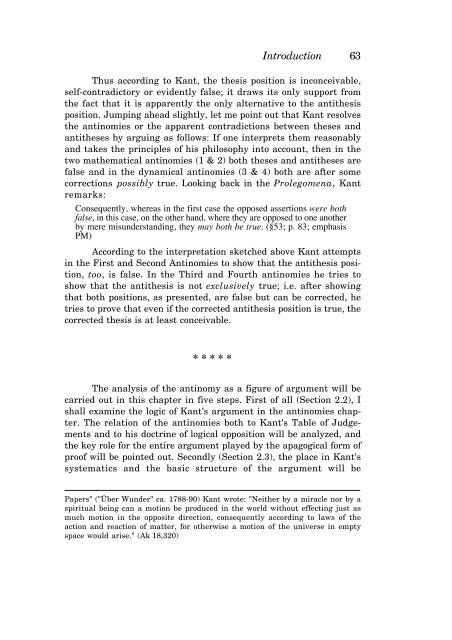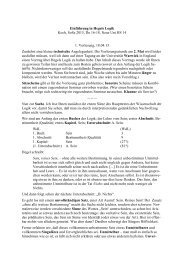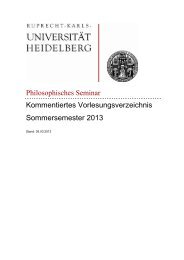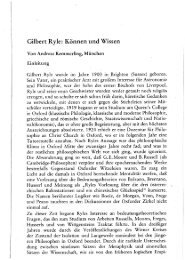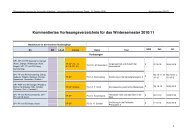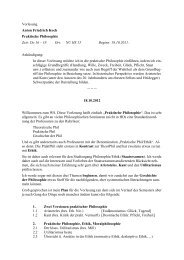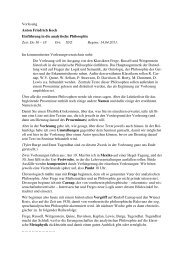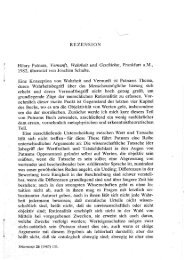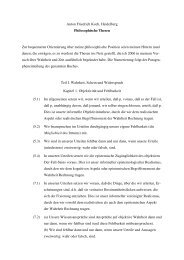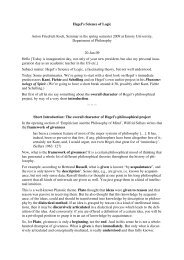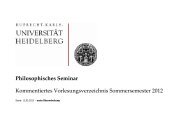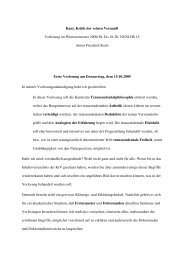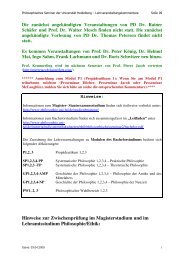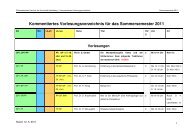KANT'S CRITIQUE OF TELEOLOGY IN BIOLOGICAL EXPLANATION
KANT'S CRITIQUE OF TELEOLOGY IN BIOLOGICAL EXPLANATION
KANT'S CRITIQUE OF TELEOLOGY IN BIOLOGICAL EXPLANATION
You also want an ePaper? Increase the reach of your titles
YUMPU automatically turns print PDFs into web optimized ePapers that Google loves.
Introduction 63<br />
Thus according to Kant, the thesis position is inconceivable,<br />
self-contradictory or evidently false; it draws its only support from<br />
the fact that it is apparently the only alternative to the antithesis<br />
position. Jumping ahead slightly, let me point out that Kant resolves<br />
the antinomies or the apparent contradictions between theses and<br />
antitheses by arguing as follows: If one interprets them reasonably<br />
and takes the principles of his philosophy into account, then in the<br />
two mathematical antinomies (1 & 2) both theses and antitheses are<br />
false and in the dynamical antinomies (3 & 4) both are after some<br />
corrections possibly true. Looking back in the Prolegomena, Kant<br />
remarks:<br />
Consequently, whereas in the first case the opposed assertions were both<br />
false, in this case, on the other hand, where they are opposed to one another<br />
by mere misunderstanding, they may both be true. (§53; p. 83; emphasis<br />
PM)<br />
According to the interpretation sketched above Kant attempts<br />
in the First and Second Antinomies to show that the antithesis position,<br />
too, is false. In the Third and Fourth antinomies he tries to<br />
show that the antithesis is not exclusively true; i.e. after showing<br />
that both positions, as presented, are false but can be corrected, he<br />
tries to prove that even if the corrected antithesis position is true, the<br />
corrected thesis is at least conceivable.<br />
* * * * *<br />
The analysis of the antinomy as a figure of argument will be<br />
carried out in this chapter in five steps. First of all (Section 2.2), I<br />
shall examine the logic of Kant's argument in the antinomies chapter.<br />
The relation of the antinomies both to Kant's Table of Judgements<br />
and to his doctrine of logical opposition will be analyzed, and<br />
the key role for the entire argument played by the apagogical form of<br />
proof will be pointed out. Secondly (Section 2.3), the place in Kant's<br />
systematics and the basic structure of the argument will be<br />
Papers" ("Über Wunder" ca. 1788-90) Kant wrote: "Neither by a miracle nor by a<br />
spiritual being can a motion be produced in the world without effecting just as<br />
much motion in the opposite direction, consequently according to laws of the<br />
action and reaction of matter, for otherwise a motion of the universe in empty<br />
space would arise." (Ak 18,320)


